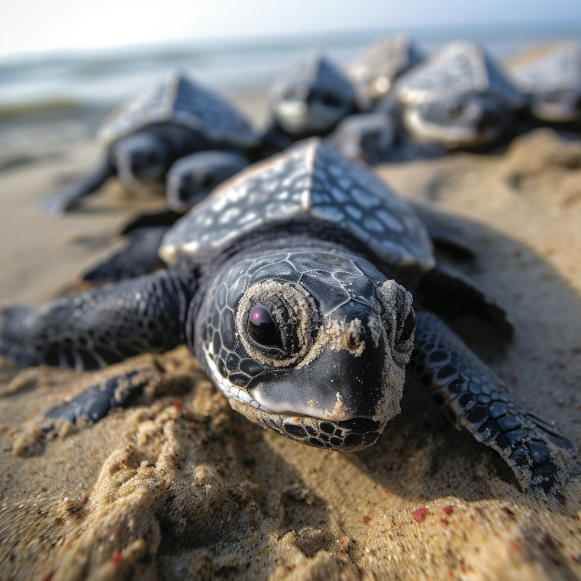‘A double whammy’: If the heat doesn’t kill baby sea turtles, they still may face birth defects

When temperatures reach dangerously high levels, sea turtles are more likely to die, and new research from Florida Atlantic University indicates that even those sea turtles who survive are likely to have birth defects.
“It’s sort of a double whammy,” said Sarah Milton, a primary researcher for the study and a professor in FAU’s department of biological sciences. “We have fewer making it out, and those who do are less healthy.”
The study discovered a link between high temperatures and the survival of leatherback sea turtle hatchlings, a vulnerable species.
Vulnerable species are animals that face extinction but not at the same level as threatened or endangered species.
“While leatherback turtle nests in South Florida are laid in cooler months and are deeper than nests of other species, temperatures can still rise surprisingly high,” Milton said in a statement.
“Rising temperatures as a result of climate change pose a significant threat to a species that already has lower nest success than other species that use the same nesting beaches.”
Researchers monitored the temperatures in nests along Juno Beach and discovered that hatchlings from hotter nests had:
- Shorter flippers
- Reduced righting ability, or the turtles’ ability to flip over when lying on their backs
- Shorter incubation periods, which means less time for turtle embryo development, resulting in less time for hatchling development.
Worse, these flaws make the turtles much more vulnerable to predators like ghost crabs, according to Milton.
This summer set a global record for the highest temperature ever recorded, which could lead to more hot nests for leatherback sea turtles in the future.
“Leatherbacks are already slower than other turtles because they are bigger, clumsier, and underdeveloped,” Milton explained. “So they’re already at a disadvantage because they’re crawling slower and being clumsier.” And now that we’re adding higher nest temperatures, it’s exacerbating the problem.”
According to Milton, researchers do not fully understand why high temperatures lead to lower chances of survival and improper development.
Temperatures are still reaching dangerous levels in nests with greater depths or those built earlier in the year during cooler months, according to researchers.
“Temperatures are still getting really high, 35, sometimes 36 degrees Celsius, which is basically the temperature where they start to cook at,” she said.
36 degrees Celsius is nearly 97 degrees Fahrenheit.
The temperature surrounding the eggs determines sea turtle sex, and only female hatchlings can withstand the heat.
Male sea turtle populations are already declining as a result of this phenomenon, and Milton believes the situation will worsen over time.
“Pretty much everything we’re seeing coming off the beaches lately are females,” she said. “It will be difficult to find a date on Saturday night in 25 or 30 years when (they) are of reproductive age.”
Finding solutions to these heat-related problems is difficult, according to Milton, owing to “the practicality of scale.”
“A lot of people ask, ‘Well, can’t we just water the nests or shade the nests?'” she explained. “We can’t shade hundreds of thousands of nests.” The scale required to ensure that one male survives to adulthood would be enormous.
“We may be forced to do that in the future, but it’s not the simple solution that people believe it is.”






